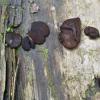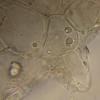
18-06-2025 19:24
 Bernard Declercq
Bernard Declercq
Good evening,On Oenanthe aquatica we collected a

18-06-2025 16:24
 Andgelo Mombert
Andgelo Mombert
Bonjour,Un minuscule stade imparfait, qui pousse s

13-06-2025 16:34
 Andgelo Mombert
Andgelo Mombert
Bonjour,Un petit discomycète qui me résiste. Il

11-06-2025 16:26
Hi everyone, I am looking for the following protol

17-06-2025 12:10
Del pasado dia 4 en bosque de hayas, en tierraA

12-03-2025 17:54
Karl Soler KinnerbäckHi all!Do you agree with Scutellinia hyperborea? P

17-06-2025 12:02
Del pasado sabado, en bosque de hayas y avellanos,

13-06-2025 09:41
Hello.A cerebriform ascomycete sprouting scattered
 Hello forum,
Hello forum,how would you call this Pachyella? Growing on wood in a brook, not tested for latex presence.
Very short outgrowths on excipulum. Asci with croziers, IKI+b (type W).
Spores *18.5-21.5(22.3) × (10.3)10.7-11.7(11.8) um, X = 19.8 × 11.2 um, Q = 1.67-1.77-1.90,
with very fine ornamentation.
P. pseudosuccosa seems close, but the flesh didn't turn yellow.
Thank you in advance.
Viktorie

Although the spore ornamentation is very close to those of P. pseudosuccosa, the latter is very different (see attached picture) and has hyphoid hairs on the outer part of excipulum.
Is it really a Pachyella? It seems there is no gelatinous matter in the outer part of excipulum... Using my key of Pezizaceae, I cannot find any correspondance.
The content of paraphyses reminds me the genus Elaiopezia, but I don't know any species with biguttulate ascospores.
Do you think possible to show the amyloid reaction on top of asci (your picture is too small)?

I compared it with my microphotos of Daleomyces spp. and I think it really is type W.
There was some gel on excipulum while fresh, now with exsiccate I'm not sure which is dried gel a which just some debris. When I first microscoped it, it was already a week after collecting, so perhaps the outer surface has dried out by then(?). How do you recognize gel coating in exsiccates, by staining it with CRB or is it better visible in some medium?

The gelatinous layer is always hard to evaluate on exsiccata, but your material is recent, so you could try to rehydrate in water and use CRB as medium to check this character.
In Pachyella, only P. salicina and P. pseudoampelina are suspected to not have hyphoid hairs, but I don't think your collection could be one of these species.
A DNA sequencing will surely provide an interesting result.
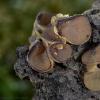
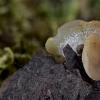
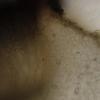
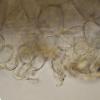


 ornamentation-0001.jpg
ornamentation-0001.jpg